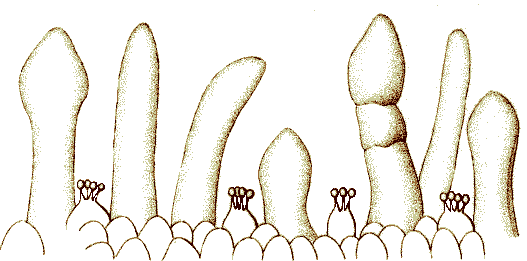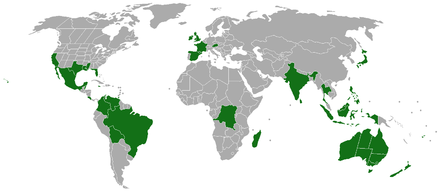Over the years, there has been a lot of confusion surrounding the term “Blue Meanie” in the mushroom cultivation world. Is it a Psilocybe cubensis strain? Is it the same as the Panaeolus cyanescens variety? The short answer is no—and this blog will break down why.
The Confusion Behind “Blue Meanie”
One of the most common misconceptions is that Blue Meanie refers to a Psilocybe cubensis strain. While there is a cubensis variety labeled “Blue Meanie” (often abbreviated BM), this name is widely believed to be a vendor misnomer that dates back to the late 1980s.
The confusion likely started with The Keeper, a vendor known for releasing strains like B+, who allegedly crossed Psilocybe azurescens with a wild cubensis isolate to create this so-called hybrid. However, this claim has never been verified by genetic sequencing, and the idea of such a cross is highly contested in the mycology community.
Even Shroomery admins like Roger Rabbit have spoken out, stating in 2006:
“The cube strain that was renamed [Blue Meanie] should be boycotted until it goes away.”
The general consensus is that “Blue Meanie cubensis” is simply a standard golden cap magic mushroom with no relation to the true Panaeolus variant.
What Is the Real Blue Meanie?
The true Blue Meanie refers to a strain of Panaeolus cyanescens, an entirely different species of mushroom known for its dung-loving habitat, higher potency, and unique growth characteristics. These mushrooms are also commonly referred to as “Pans” or “Copes” (short for Copelandia, the former genus name).
Microscopy and Identification
One of the ways to differentiate Panaeolus cyanescens from other mushrooms under a microscope is by the absence of Chrysocystidia—a specialized cell structure often found in other Psilocybe species. Chrysocystidia appear as spear-like structures on the gills and are highlighted using chemical stains like KOH.
Mycologists like Alan Rockefeller have documented detailed microscopy techniques for species identification, but in the field, many researchers rely on visible spore characteristics and habitat data for rapid ID.
Distribution of Panaeolus Cyanescens in the Wild
Panaeolus cyanescens grows abundantly in tropical and subtropical regions, often found in cow pastures and landscaped areas. Their spores are easily spread via manure and moist environments, making them common in Southeast Asia, Central America, the southern U.S., and Caribbean islands.
The Rise of TTBVI: The Strongest and Easiest Pan to Grow
Among all known Pan varieties, the Tamarind Tree British Virgin Islands (TTBVI) variant stands out as the most aggressive and beginner-friendly cultivar.
Thanks to the tireless efforts of citizen scientists like Gordo (also known as Gordo Tek on Patreon), this powerful strain is now widely available and is quickly becoming the go-to Pan for new mycologists.
The Origin of TTBVI
The original spores were discovered by a Reddit user, u/TamarindTreeBVI, who unintentionally collected them after noticing a flush of mushrooms growing in a manure bag at home. He shared the find with legendary Shroomery contributor V.L, who helped clean and domesticate the spores for indoor cultivation.
Eventually, V.L passed the genetics to Gordo, who further tested and circulated the strain—creating what is now one of the most reliable and high-yielding Panaeolus cyanescens varieties in the world.
Why TTBVI Stands Out
- Easy to Grow: Ideal for beginner Pan growers
- High Potency: Among the most potent cyanescens strains
- Resilient Genetics: Adaptable to indoor cultivation
- Large Flushes: Higher yields compared to other Pans
After testing multiple Panaeolus strains, many growers agree: TTBVI is in a league of its own.
Other Popular Pan Varieties
While TTBVI has earned its reputation, there are many other Pan strains worth exploring, including:
- MIB
- Bunnell
- NVTX (Texas)
- Pan Australia
- Estero*
- Weza
- PHV (Purple Haustralia Venom)
- Nec’d
- Red Spore MIB
All of these can be grown using similar techniques to TTBVI, but few match its yield, vigor, or ease of cultivation.
Final Thoughts
If you’ve ever been confused by the term “Blue Meanie,” you’re not alone. But now you know:
- The Psilocybe cubensis “Blue Meanie” is a mislabeled, genetically unremarkable strain.
- The true Blue Meanie belongs to the species Panaeolus cyanescens, prized for its potency and exotic qualities.
- Among all the Pan strains, TTBVI stands out as the best cultivar for new and experienced growers alike.
Whether you’re in it for microscopy, cultivation, or exploration of genetic diversity, understanding the difference between Cubensis and Panaeolus Blue Meanie is a key step in becoming a more informed and effective mycologist.
Ready to dive into exotic spores like TTBVI? Make sure to work in a sterile environment, invest in the right tools, and join forums like Shroomery or Reddit’s r/mycology to stay connected with the community.


Watch Our Youtube Video: Spore Guy

